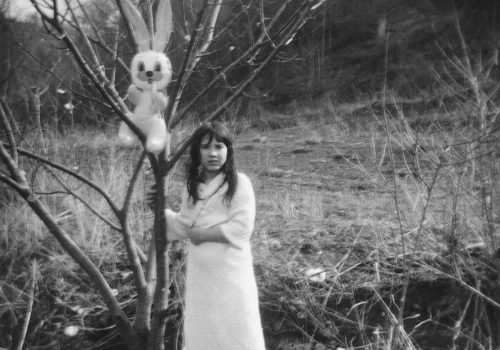For over 40 years, American photographer Wendy Ewald has traveled the globe as part of a sustained and evolving artistic and educational project. In each new location, Ewald begins by addressing the conceptual, formal, and narrative aspects of photography with her students, as well as making portraits of them; She teaches them to use the camera, many for the first time.
Leaving the subject matter open, the children are free to explore societal issues that are relevant to their communities, including race, class, and gender. The results are poetic and vibrant portraits that reveal intimate connections between her students and their worlds.
In 1969 Ewald volunteered to work with children on a Native American reservation in eastern Canada. Intent on a career in photography and inspired by Dorothea Lange’s photographs of Depression-era farmers, she imagined producing her own documentation of life on the reservation. But the photographs her young students took with cameras Wendy brought to them fundamentally changed her approach. Their photographs, she says “were more complicated and disturbing than mine, and closer, I realized, what their life was like.”
In 1975, Ewald moved to rural Letcher County, Kentucky and began working with children between the ages of six and fourteen. She spent six years there, establishing the roots of her practice. Rather than simply documenting the children’s lives, Ewald removed herself as the exclusive author and instead provided the children with the tools and skills to document their own lives. In doing so, Ewald challenged fundamental distinctions between conceptual art and documentary photography, between photographer and subject, and between teacher and student. This work paved the way for her continuing collaborative explorations.
An exhibition in New York features over 70 black and white vintage prints from seven of Ewald’s earliest projects. It begins with her first extended collaboration in Kentucky in 1975 and includes projects from Mexico (1991), India (1989-1991), the Netherlands (1996), Colombia (1982-1985), South Africa (1992) and Morocco (1995).
These photographs are many things, but one thing they are not is the singular vision of Wendy Ewald. What Ewald produces with her students is a different kind of story about children, an illustrated tale that adults would never imagine. Their photographs are as haunting and heartbreaking as anything by Diane Arbus, Nan Goldin, Eugene Meatyard or other photographers documenting the rough poetry of everyday life. They are at times outlandish, lyrical, even disturbing as in What I don’t like about where I live – a black man, a 1992 image taken by a white South African girl named Nicoline Cuyler.
The documentary aspect of Ewald’s work can be compared to photographic masters such as Walker Evans and Robert Frank, while the conceptual aspects parallel artists such as Vito Acconci and Douglas Huebler. Ewald’s work radically alters conventional definitions of individual authorship. Her practice models new forms of artistic intentions, identities and power relations. Over several decades, through her numerous museum exhibitions and her books, Ewald’s practice has inspired several generations of collaborative artists.
Wendy Ewald: Works, Projects, Collaborations 1975 – 1996
April 19 to June 2, 2018
Steven Kasher Gallery
2nd Floor, 515 W 26th St
New York, NY 10001
USA
















